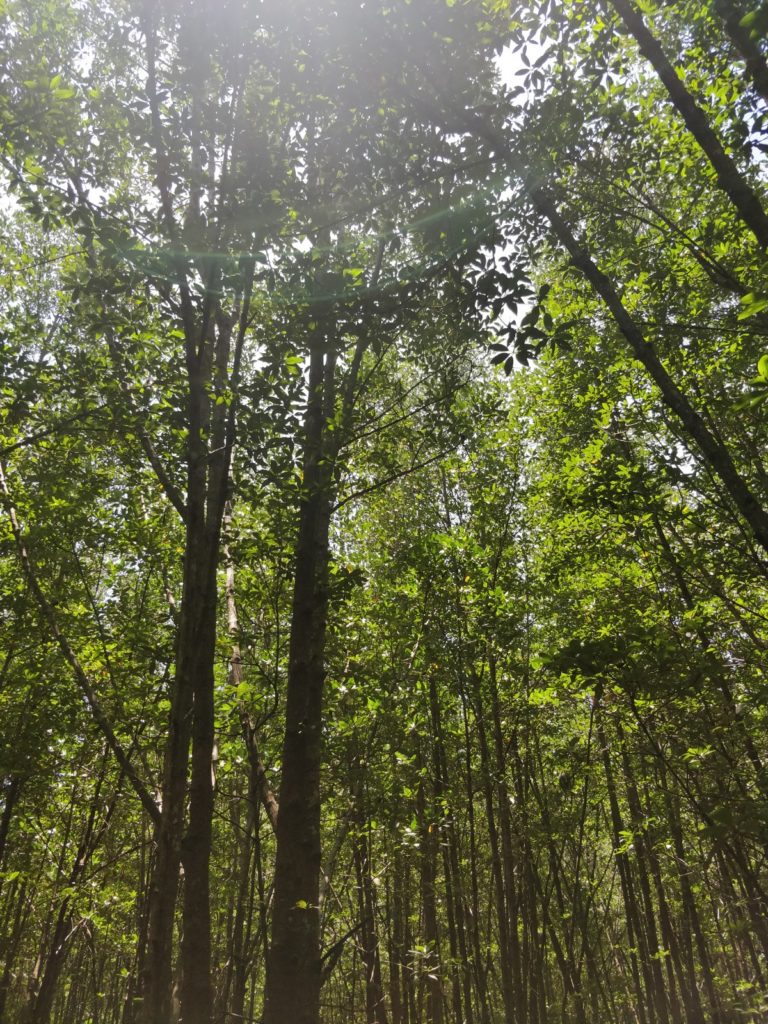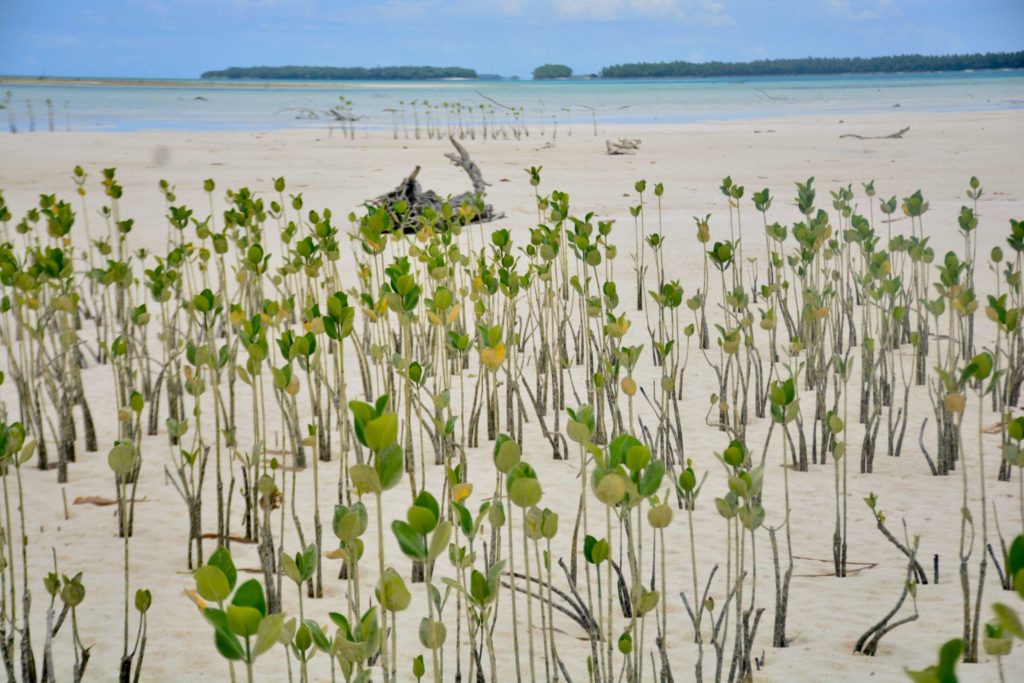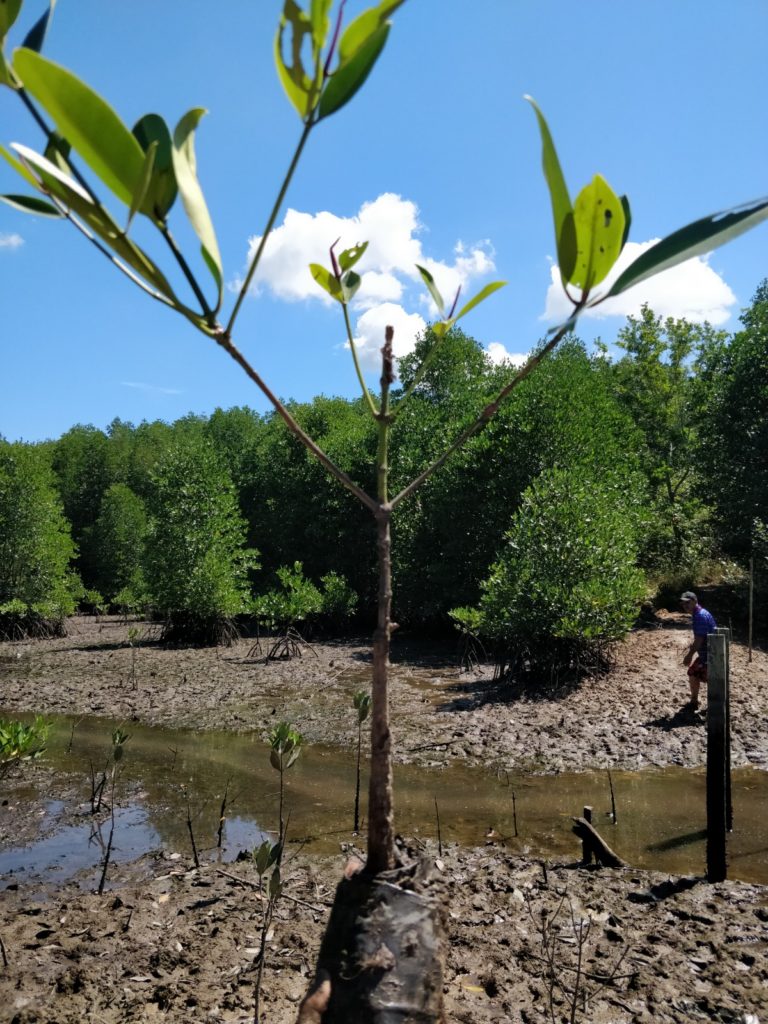Mangroves
Mangrove forests are coastal ecosystems that are critically important for many reasons: from carbon sequestration, biodiversity, to protection against erosion.

Among the most carbon-rich habitats of our planet
Mangroves are natural carbon-scrubbers, taking CO2 out of the atmosphere and packing it away, for millennia or more, in their rich soils.
On an equal surface, mangroves sequester between 5 and 6 times more carbon than a terrestrial forest. On average, they have double the living biomass of tropical forests overall. (Donato et al. 2011)
14% of carbon sequestration by Ocean habitats are due to mangroves. (Alongi 2014). Most mangrove forests lay down peat — thick, heavy layers of carbon-rich soil that stays waterlogged and doesn’t rot. That gives us a huge extra carbon store in the soil. But that’s not all: about 10% of what they produce also gets sequestered away in the soil.

Threats
A third of the world’s mangroves have likely been lost over the last 50 years, largely through conversion for aquaculture or agriculture (Alongi 2002).
Rapid loss rates combined with high carbon values mean that mangroves may contribute to 10% of the total carbon emissions from deforestation (Donato et al. 2011)
But mangroves loss is also a matter of vulnerability for neighboring villages, as they act as a natural protection against climatic disasters and erosion of the coastline.

Nature-based solutions
Restoring mangrove ecosystems is a perennial solution, both to mitigate the climate crisis and to enhance the adaptation of coastal villages and communities.
« Mangrove restoration is one of the most optimistic conservation tools I can think of. Low cost, massive gain, local ownership, ecosystem services, community empowerment, climate change adaptation, carbon storage, fisheries enhancement, tourism, timber, fuel wood without fossil fuels. It won’t work everywhere, but the win-wins are wonderful. »
– Mark Spalding, Restoring Blue Forests: Opportunities for Mangroves, in. Cool Green Science, June 5, 2013.